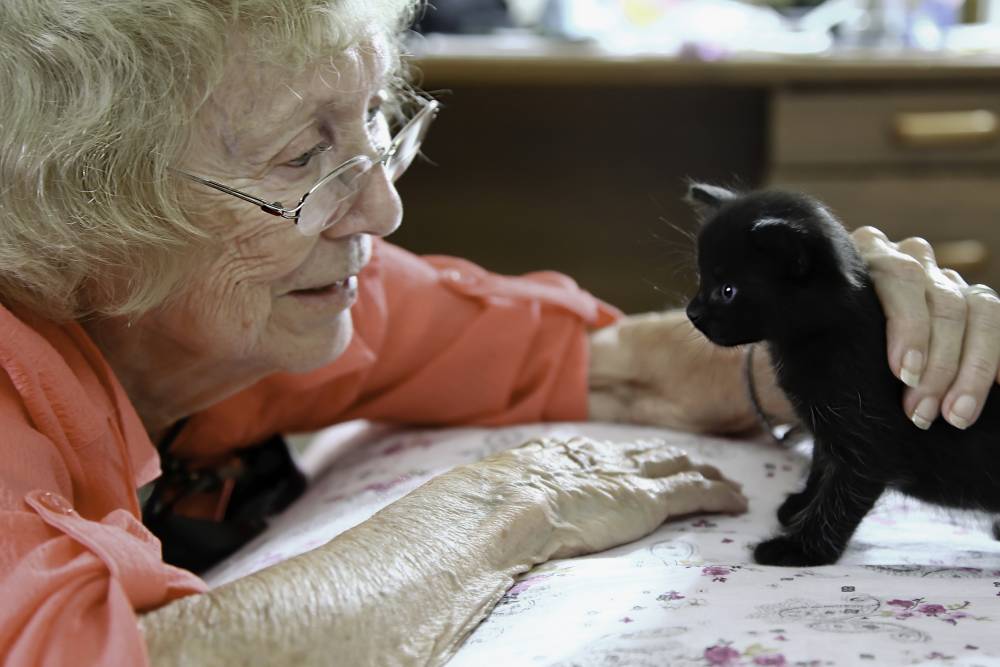
Pets are a cost-effective way to improve residents’ health in aged care, a university lecturer has written in her submission to the royal commission.
Dr Janette Young, a lecturer with the University of South Australia’s Health Sciences faculty, told HelloCare, pets can be “really important” for older people and they should be able to keep them when they move into residential aged care.
Having to give up a pet to make the move into aged care can make an already difficult decision even more traumatic.
“You only have to speak to a couple of people who’ve had to give up pets to go into aged care to know it’s really distressing,” Dr Young said.
“Going into aged care… is a time of great stress,” Dr Young said. Giving up a pet when they do so is taking away something “really precious” to them right at a time they most need it.
She would like to see policies put in place that enable people moving into residential aged care to keep their pets.
Dr Young said owning a pet has a range of health benefits.
Pets have been shown to reduce people’s heart rates, and they are well-known “social catalysts”.
“If you’re walking the dog, it’s okay to talk to strangers, socially it’s not okay otherwise,” she said.
“People can feel safer if they see other people’s pets around the neighbourhood. People who have pets feel safer in their own home. There’s that sense of comfort and companionships that’s really important.”
Older people, especially those who live alone, are more likely to be isolated, Dr Young said, and therefore non-human contact for those people is vitally important.
People are giving up on pets quite early in the ageing process, in part because they are anticipating they won’t be able to take a pet into aged care, Dr Young says.
“About 64 per cent of households in Australia have a pet. But only 48 per cent above the age of 65 have them.”
Some of that is by choice, she said, but some also reflects concerns about what will happen to the pet if the owner can no longer look after it.
In 2018, the Animal Welfare League released a report saying only 18 per cent of residential aged care facilities allow residents to live with a pet.
Dr Young would like to see aged care facilities change their policies around pet ownership, and believes there would be economic benefits in doing so.
“We think the savings you can get from supporting someone to have a pet in aged care could actually pay for themselves.”
Savings on pharmaceuticals might be possible, she said.
“If somebody has always slept with a cat and they wake up in the night feeling lost and confused and there’s a cat next to them, you don’t have to medicate them. They just go back to sleep so you don’t have them getting up, and perhaps getting lost,” Dr Young said.
More research is needed, Dr Young said. She would like to see studies in the following areas.
– Mapping the interests of all parties involved in pet ownership in aged care, including the residents, staff, family, visitors, animal lovers and non-lovers, and the animals themselves.
– Research into models of pet ownership in aged that could be used. Dr Young is currently working with an aged care provider and an animal welfare group on a model of pet fostering in aged care. The program has reduced the rates of cat euthanasia from around 50% to 80%.
– Emergency and short-term animal care options are needed for older people’s pets. For example, so if an older person is admitted to hospital suddenly, their pet can be cared for, reducing the distress for owners, and delivering animal welfare.
– Dr Young would like to see a study of the economic benefits of human-pet relationships in aged care. She suggests that savings from reductions in pharmaceutical use could be used to fund animal carers and care.
– Aged care funding should cover animal carers for frail and debilitated residents.
Dr Young said it was also important to acknowledge some of the difficulties associated with older people having pets.
“There are some negative spaces to be conscious of. There is some literature around falls and pets ownership, for cats in particular that weave around your legs.
“And also the appropriateness of animals for people. If somebody’s got a big dog and they’re getting older and frailer, whether or not they’re going to be able to care for the animal appropriately (needs to be considered).”
Dr Young would like to see a more sophisticated and nuanced approach to pets in aged care.
“I can see in 10-20 years, we might have a diverse response for older people,” she hoped.